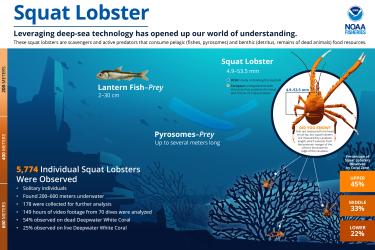Today, NOAA released the Bycatch Reduction Engineering Report to Congress detailing the agency’s progress in preventing and reducing bycatch through research on technology innovation and fishing practice solutions.
Bycatch occurs when fishermen - both recreational and commercial—discard unintentionally caught fish, or when a gear interaction harms or kills marine resources like marine mammals, seabirds, corals, sponges, sea turtles or protected fish. Reducing bycatch is a key part of NOAA’s efforts to maintain sustainable fisheries and conserve and recover protected species.
”While U.S. fisheries management is a world model of success generally, we still need to make progress on bycatch—a complex, global issue that threatens the sustainability and resiliency of our fishing communities, economies, and ocean ecosystems,” said Eileen Sobeck, assistant NOAA administrator for fisheries. “We work side-by-side with fishermen on their boats to develop solutions to top bycatch challenges facing our nation’s fisheries. While we’ve made great progress, there is more to do.”
Projects realized through NOAA grants highlighted in the 2014 Report to Congress include:
- Use of real-time maps to identify butterfish hotspots, reducing butterfish bycatch in the Northeast longfin squid fishery by 54 percent in two years;
- Use of artificial illumination in the West Coast ocean shrimp trawl fishery, reducing bycatch of protected eulachon by up to 91 percent; and
- Use of a modified gillnet that reduced sturgeon interactions by more than 60 percent in Virginia and North Carolina.
Under the Magnuson Stevens Act, NOAA and its partners have nearly 40 years of experience in finding innovative solutions to bycatch in the United States and internationally. For example, NOAA’s Bycatch Reduction Engineering Program funds research that fosters innovative technological solutions and investigates changes in fishing practices to minimize bycatch. The program is now accepting applications for this year’s grants.
The report announced today is one of several bycatch products that NOAA Fisheries is introducing this month, as the agency works on multiple fronts to improve our approach to bycatch. Others include a draft National Bycatch Strategy and an update to our bycatch statistics—both scheduled to come out in the next couple of weeks.
NOAA's mission is to understand and predict changes in the Earth's environment, from the depths of the ocean to the surface of the sun, and to conserve and manage our coastal and marine resources. Join us on Facebook, Twitter, Instagram and our other social media channels.
